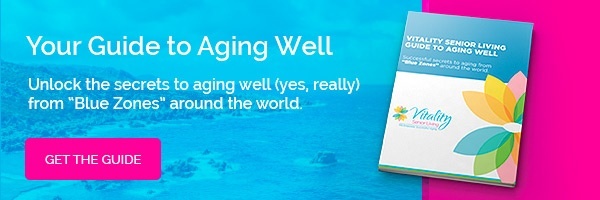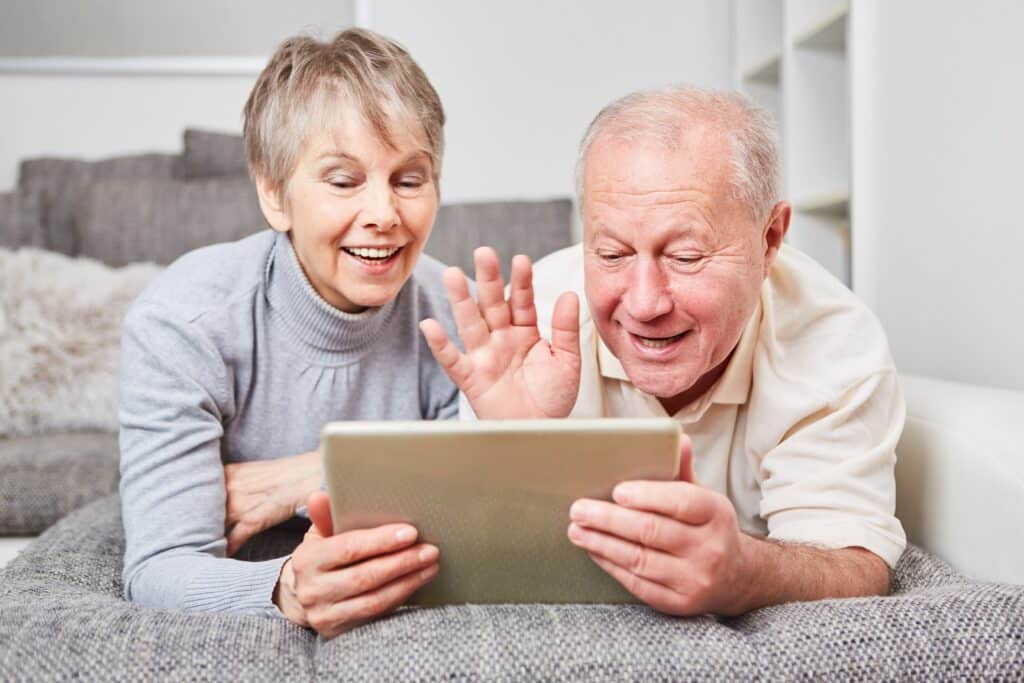So far, 2020 has decidedly been one of the most unsocial years we’ve ever endured. The experts say staying apart can help prevent the spread of COVID-19. And we’re all doing our part! But is there a downside aside from boredom and loneliness? Research among residents in Blue Zones®, five regions in the world where people seem to live the longest, cite belonging and social connections as keys to successful aging. The question becomes, how can we stay social while protecting ourselves during the pandemic? We happen to have some everyday ways to do just that!
For more information on how we incorporate the Blue Zones’ approach to fitness in senior living, check out our Successful Secrets to Aging Guide!

Importance of Social Connection in Blue Zones
These regions – Sardinia, Italy; the Greek island of Ikaria; Loma Linda, California; Nicoya Peninsula, Costa Rica and Okinawa, Japan – have been identified as Blue Zones. While far from each other, residents in these regions all share similar lifestyle traits known as the Power 9® which researchers believe help them to live longer. We’ve discussed all these traits in past blogs , but three of which specifically relate to social connection:
- Belong – Participate in a faith-based community of some kind.
- Loved Ones First – Put family first in all decision making.
- Right Tribe – Find a circle of friends that share your commitment to a healthy lifestyle.
Doing Blue Zones during COVID-19
It may look a bit different but it is possible to maintain social connection during the pandemic even as seniors are continuing to isolate at home and visitors remain restricted in senior living. Here’s what Blue Zones’ residents do and how you can apply these practices to support successful aging right now.
Belong
After interviewing 263 centenarians, Blue Zones’ researchers found all but five of them belonged to some type of faith-based community. In fact, their research shows that attending faith-based services four times per month will add four to 14 years of life expectancy. Denomination doesn’t matter, just regular participation. What can you do? Most religious organizations are offering church services online. Some even offer live chats and small group studies via Zoom as well. Check locally to see what options might be available.
Loved Ones First
Blue Zones’ residents ensure aging parents and grandparents are either nearby or living in their home which, according to research “lowers disease and mortality rates of children in the home too.” Residents also commit to a life partner which “can add up to three years of life expectancy” per Blue Zones research.What can you do? Make use of Zoom and FaceTime to video chat with at least one family member each day. And make it fun: have coffee, lunch or dinner together virtually, watch favorite shows together, create a virtual book club or game night – the options are endless. In our senior living communities, we’re encouraging window visits between residents and loved ones and have hosted family parades which have been a huge hit!
Right Tribe
However it came to be, whether they chose or were born into their social circles, the connections of Blue Zones’ residents, “favorably shaped their health behaviors.” Okinawans call it “moais,” which are groups of five friends committed to each other for life.What can you do? We mentioned above the downside of being isolated is much more than feeling bored and lonely. It can actually be unhealthy leading to increased risks for high blood pressure, heart disease, obesity, weakened immune system, anxiety, depression even cognitive decline. Again, technology is a lifeline right now. Look into online clubs, classes or hobbies that might give you more opportunity to connect with your current circle, or to expand it. And pets are part of the tribe too! This is the perfect opportunity to spend more time with them.



